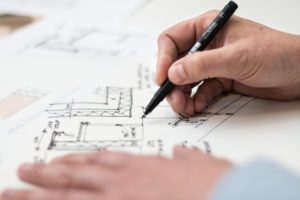According to the American Institute of Architects (AIA), a school’s design can have a big impact on keeping students safe and thriving academically. Today, many architects are harnessing the power of design to secure schools and, in the process, enhance learning.
A safe school is one that allows administrators to have physical control over the environment. It is a place where students, parents, and staff can go and not be concerned by outside or internal threats, such as intruders, natural disasters or bullies. What’s more, a secure school need not feel like a fortress or a bunker; safety measures should feel invisible to those protected by them.
 The National Institute of Building Sciences is currently working on a national standard to assess the safety level of existing school buildings. In the meantime, better security can be achieved by addressing these three key design factors, says the AIA:
The National Institute of Building Sciences is currently working on a national standard to assess the safety level of existing school buildings. In the meantime, better security can be achieved by addressing these three key design factors, says the AIA:
- Life safety: From fires to flash floods, natural disasters can happen without warning. Schools should take geography into consideration first and foremost. Also, the school should be designed to ensure that students, staff, and first responders can easily maneuver through the facility in case of an emergency.
- External security concerns: A school should have a single, main point of access that’s easily identifiable, and administrators should have visual control over every approaching individual. Security can also be enhanced through a design concept called “concentric rings of protection,” which provides multiple barriers to entry: at the property line, the exterior of the building, and within the building, via an internal set of doors. This layered protection makes it more difficult for a trespasser to reach the inside of a facility and allows first responders more time to respond.
- Transparency and flexibility: The most common threat in schools is internal: bullies. An open environment, in which students and staff can easily “see and be seen,” can help deter bullying and violence in schools. Visual transparency is key to achieving natural surveillance and fostering positive social interaction.
The U.S. Department of Homeland Security and the RAND Corporation promotes these “building hardening” practices including:
- Reinforced double-wall steel main doors
- Interior steel doors with a minimum of reinforced glass
- Tall and narrow windows to prevent pass-through
- Opening, exposed beam ceilings to thwart hiding contraband
- Wide, open hallways and stairwells to eliminate hidden areas so that all areas may be observed without any obstruction.
However, a building design will not solve all security problems, according to the journal American School & University, but by addressing safety and security in the design, a design team will be well on its way to resolving concerns. That means working closely with school districts, advisory groups, neighborhood groups and local law enforcement representatives.
For example, Michigan schools – both public and private – must consult with local law enforcement on design plans prior to actual construction or major renovation, according to the Michigan State Police Office of School Safety.
A community partnership in the design and use of a school building brings pride and a sense of ownership in the community. Being sensitive to the concerns of the surrounding community and local law-enforcement agencies can promote additional awareness among community members to help make the school safe for students and staff.
The experts agree. When school security is designed into a building, kids can focus on learning without fear.
